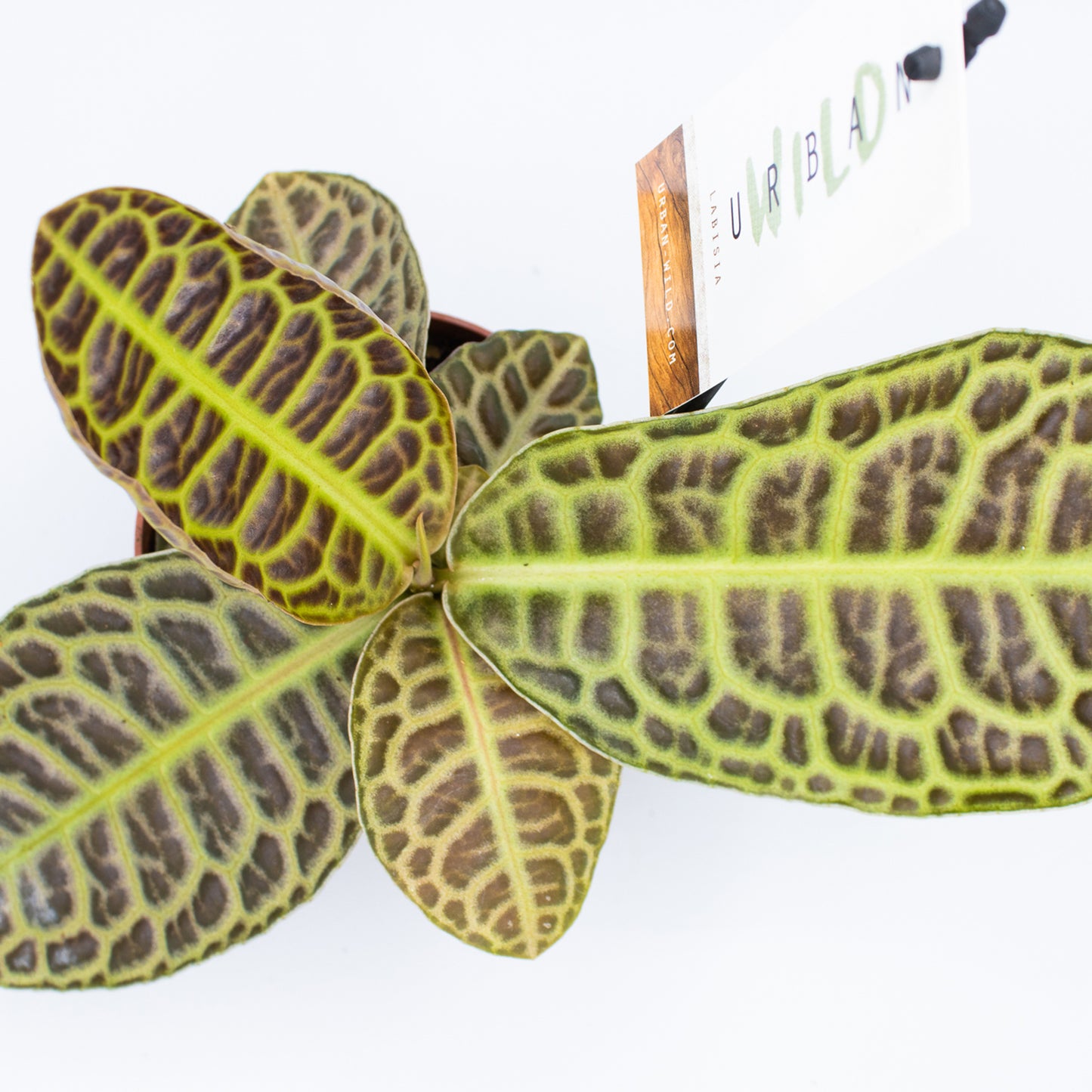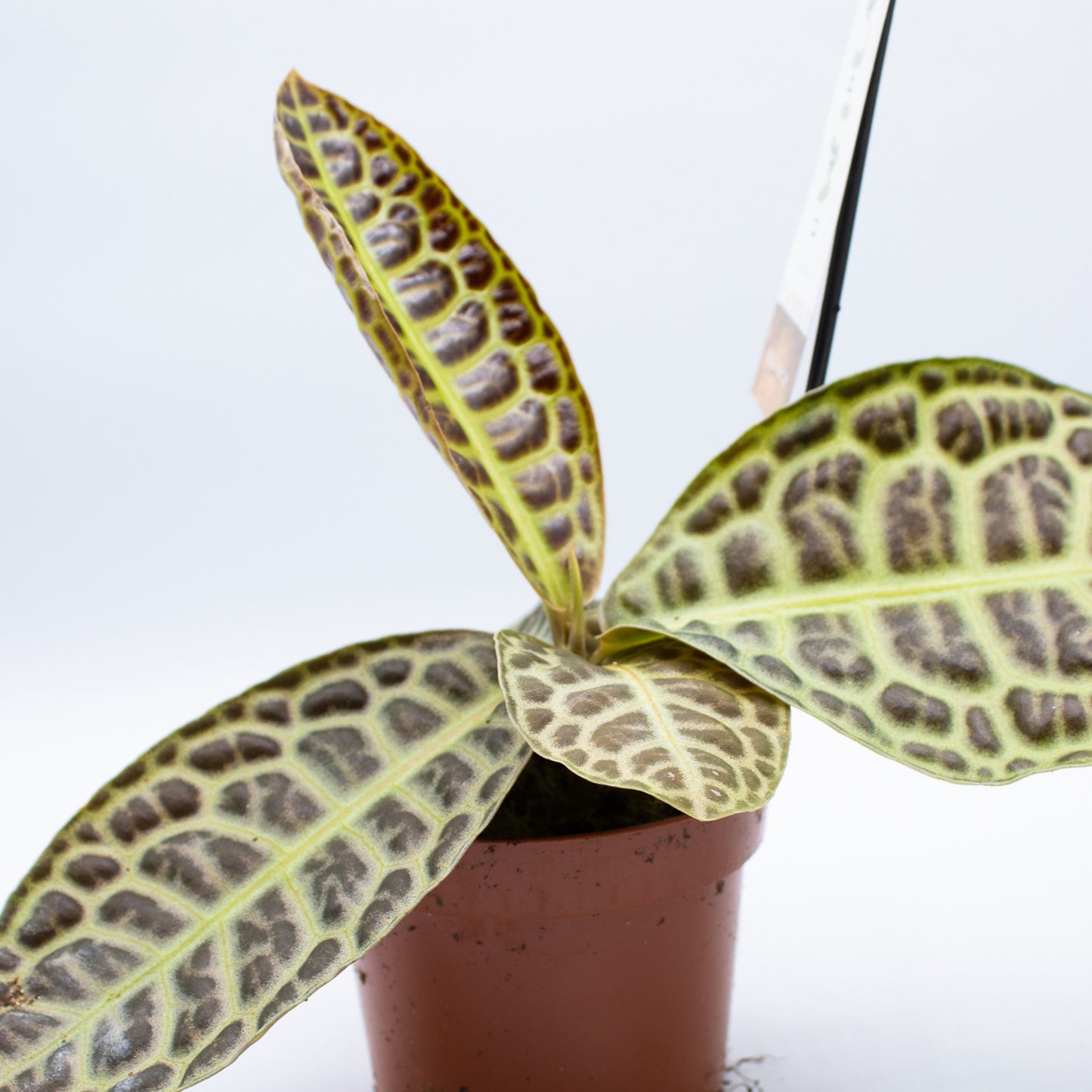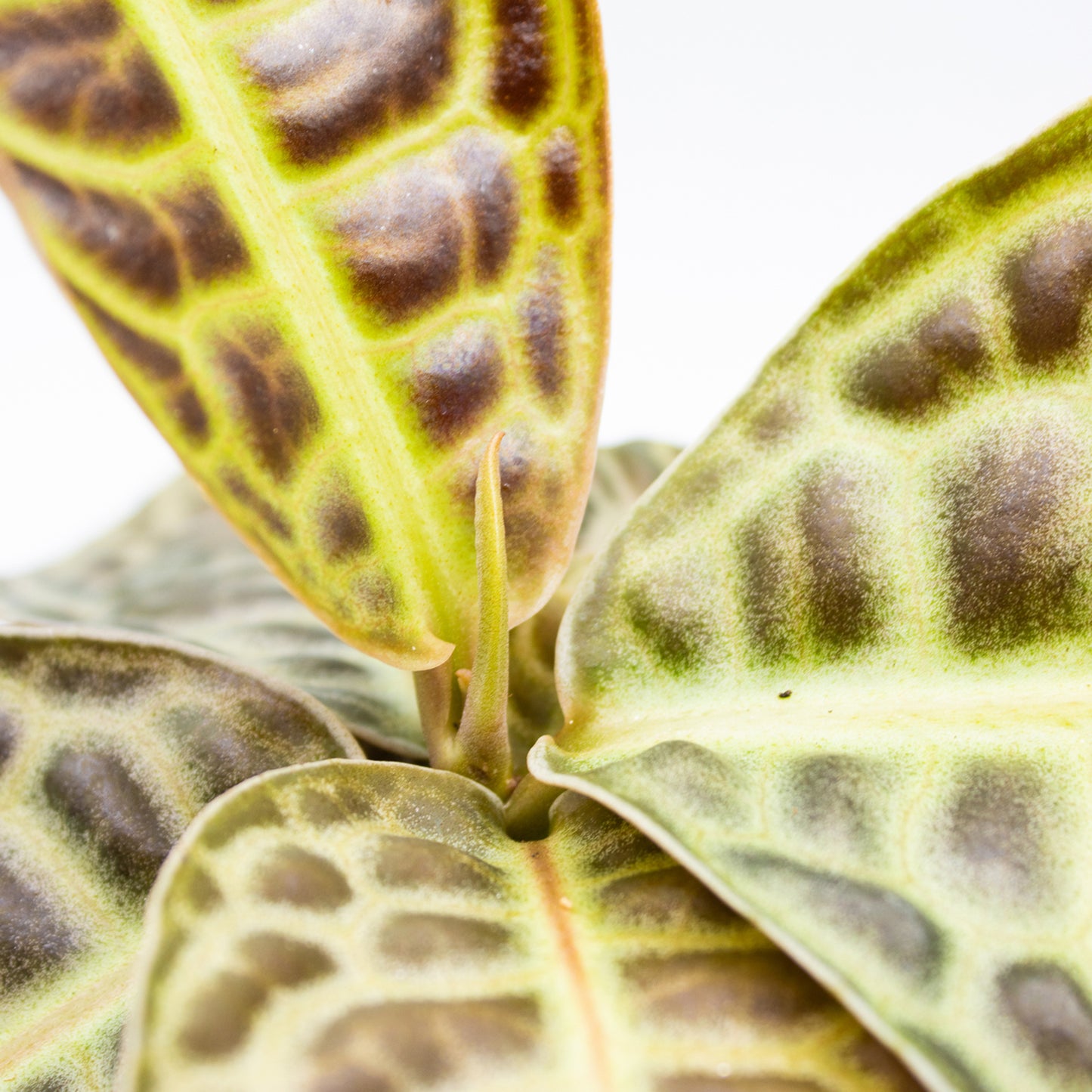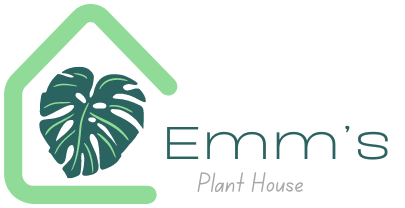1
/
of
3
Emm's Plant House
Labisia 'Turtle Back'
Labisia 'Turtle Back'
Regular price
£53.21 GBP
Regular price
£66.60 GBP
Sale price
£53.21 GBP
Unit price
/
per
Taxes included.
Couldn't load pickup availability
Labisia 'Turtle Back' is a rare houseplant, perfect for adding a touch of uniqueness to your home. With its distinctive turtle shell-like leaves, it is a visually appealing addition to any indoor space. As a low maintenance plant, it's a great choice for those looking for a unique yet easy-to-care-for houseplant.
Care Guide
Care Guide
Full Botanical Name:
Labisia pumila 'Turtle Back'
Common Names:
Turtle Back Plant
Country and/or Region of Origin:
Native to the rainforests of Southeast Asia, particularly Malaysia and surrounding areas.
Growing Conditions in Native Habitat:
Labisia pumila thrives under the dense canopy of tropical forests, in moist, shady conditions with rich, organic soil.
Care Information:
-
Light:
Prefers low to moderate indirect light, mimicking the shaded understory of its native habitat. Avoid direct sunlight to prevent leaf scorch. -
Ideal Room:
Best suited for areas with moderate natural light, such as bathrooms or kitchens where humidity tends to be higher. -
Feeding:
Feed with a diluted, balanced fertilizer every 4-6 weeks during the growing season. Reduce feeding during the dormant winter months. -
Humidity:
Requires high humidity. Regular misting, a pebble tray, or a humidifier can help maintain the necessary moisture levels. -
Ideal Temperature:
Thrives in warm conditions, ideally between 65°F and 80°F (18°C to 27°C). Avoid temperatures below 60°F (15°C). -
Watering:
Keep the soil consistently moist but not waterlogged. Water when the top inch of soil feels dry to the touch. -
Pet/Child Safe:
Generally considered non-toxic, making it safe for homes with pets and children. -
Soil:
Prefers rich, well-draining soil with plenty of organic material. A peat-based mix with added perlite or vermiculite works well. -
Propagation:
Can be propagated through division or cuttings. Spring is the best time for propagation to allow for vigorous growth. -
Eventual Height and Spread:
Typically grows up to 6-12 inches (15-30 cm) tall and can spread outwards similarly. -
Growth Rate:
Moderate. Proper care and favorable conditions will enhance growth. -
Pests and Treatment:
Watch for common pests like aphids and spider mites. Treat with insecticidal soap or neem oil as needed. -
Repotting:
Repot every 2-3 years or when the plant outgrows its pot to refresh the soil and encourage new growth. -
Pruning:
Minimal pruning is needed. Remove dead or yellowing leaves to keep the plant healthy and tidy. -
Folk Law:
In its native regions, Labisia is often used in traditional medicine and is believed to have various health benefits, though these are not scientifically proven.
Share






